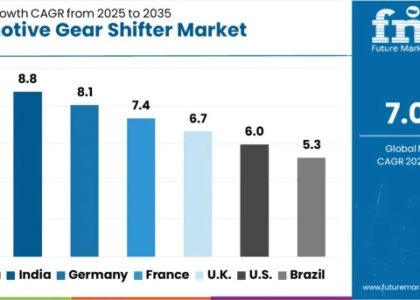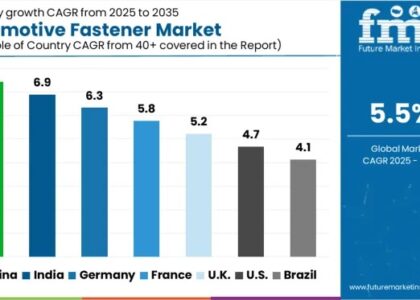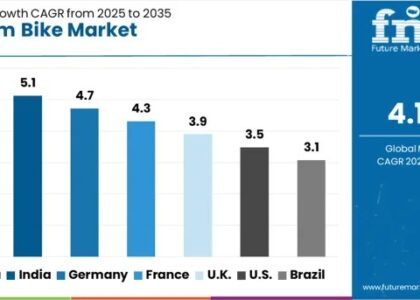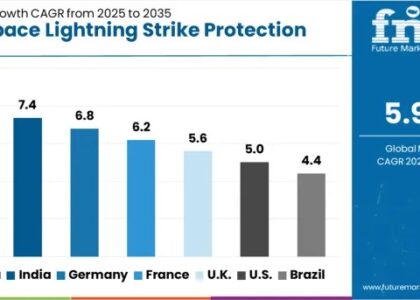During the forecast period from 2022 to 2032, the sliding blister packaging market is anticipated to experience a steady growth with a moderate CAGR of 5.5%. This growth is expected to propel the market’s estimated share to nearly US$ 41 billion by 2032, a significant increase from its 2022 value of US$ 23.9 billion.
The dominance of the global sliding blister packaging market is notably concentrated within the Asia-Pacific, Eastern Europe, and Japan (APEJ) region. Within this region, countries like China and India hold a substantial share of the market for sliding blister packaging. This can be attributed to their growing economies, rising consumer demand, and increasing reliance on this packaging solution for various industries.
Furthermore, the pharmaceutical sector in Japan and North America is experiencing rapid growth. This upsurge in the pharmaceutical market is expected to drive the demand for sliding blister packaging, as it provides a secure and convenient means of packaging medicines and medical products.
As a result, the sliding blister packaging market is poised for robust expansion throughout the forecast period. The combination of increasing demand from emerging economies and the pharmaceutical sector’s growth in mature markets indicates a positive outlook for the industry. This growth trend underscores the pivotal role sliding blister packaging plays in modern packaging solutions.
Request Sample: https://www.futuremarketinsights.com/reports/sample/rep-gb-4863
Sliding Blister Packaging Market – Key Players
Some of the key players operating in the global sliding blister packaging market include
- Aikpak Plastic Forming,
- Ecobliss Hoilding BV,
- KPAK,
- National Plastics, Inc.,
- Rohrer Corporation,
- Display Pack, Inc.,
- Tekni-Plex,
- VisiPak, Blsiterpak, Inc.
Global Sliding Blister Packaging Market – Market Dynamics
- Consumer Preference and Convenience: The demand for sliding blister packaging is driven by consumers’ preference for convenient and easy-to-use packaging solutions. Sliding blister packs offer easy access to the product and provide a clear view of the contents, making them appealing to consumers.
- Product Protection: Sliding blister packaging is designed to protect products from damage, tampering, and contamination. This aspect is vital for industries such as pharmaceuticals, electronics, and food, where product integrity is paramount.
- Eco-Friendly Initiatives: The growing emphasis on sustainability and eco-friendly packaging solutions has led to innovations in materials used for sliding blister packaging. Manufacturers are increasingly using recyclable and biodegradable materials to meet environmental standards.
- Regulatory Compliance: Stringent regulations and standards in various industries, particularly in pharmaceuticals and food, impact the design and manufacturing of sliding blister packaging. Adherence to these regulations is critical for market players.
- Innovation and Customization: Continuous innovation in packaging designs, materials, and printing technologies allows manufacturers to offer customized solutions to meet the specific needs of various industries. This customization enhances the market’s growth potential.
- Market Competition: The sliding blister packaging market is highly competitive, with several established players and new entrants vying for market share. This competition drives innovation and price competitiveness.
- Globalization of Supply Chains: The globalization of supply chains has increased the demand for standardized and efficient packaging solutions, which sliding blister packaging can provide. This trend has a significant impact on market dynamics.
- E-commerce Growth: The growth of e-commerce has increased the demand for packaging that ensures product safety during transit. Sliding blister packaging is well-suited for this purpose, driving its adoption in the e-commerce sector.
Request Customization: https://www.futuremarketinsights.com/customization-available/rep-gb-4863
Global Sliding Blister Packaging Market – Market Segmentation
Geographically, the sliding blister packaging market is segmented into end user base and material type. On the basis of end user base the sliding blister packaging market is segmented into food, pharmaceutical, cosmetic, automobile, personal and healthcare, general industries, others. On the other hand, the material type of the sliding blister packaging market is segmented into plastic and paperboard.
Whereas, the plastic market of the global sliding blister packaging market is further sub segmented into polyethylene terephthalate (PET), cyclic olefin copolymer (COC), cyclic olefin polymer (COP), polychlorotrifluoroethylene (PCTFE), polyvinylidene chloride (PVC), ethylene vinyl alcohol (EVOH), others.
About Future Market Insights (FMI)
Future Market Insights, Inc. (ESOMAR certified, recipient of the Stevie Award, and a member of the Greater New York Chamber of Commerce) offers profound insights into the driving factors that are boosting demand in the market. FMI stands as the leading global provider of market intelligence, advisory services, consulting, and events for the Packaging, Food and Beverage, Consumer, Technology, Healthcare, Industrial, and Chemicals markets. With a vast team of over 5000 analysts worldwide, FMI provides global, regional, and local expertise on diverse domains and industry trends across more than 110 countries.
Contact Us:
Future Market Insights Inc.
Christiana Corporate, 200 Continental Drive,
Suite 401, Newark, Delaware – 19713, USA
T: +1-845-579-5705
For Sales Enquiries: sales@futuremarketinsights.com
Website: https://www.futuremarketinsights.com
LinkedIn| Twitter| Blogs | YouTube






